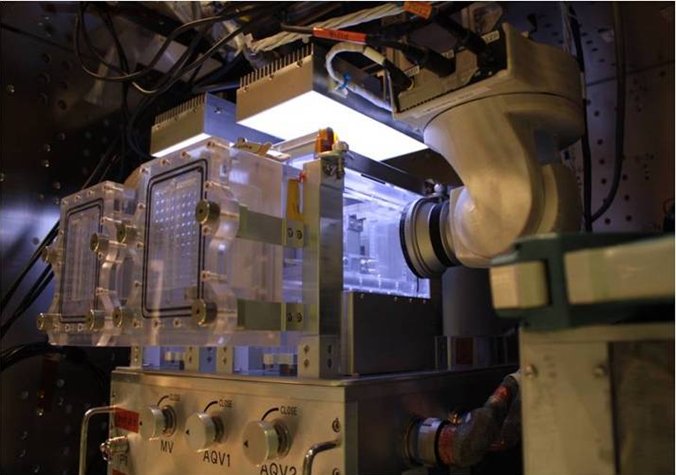Leave it to the Japanese to be responsible for sending up an aquarium into outer space with the Aquatic Habitat research mission. The Aquatic Habitat space aquarium sent to the International Space Station by the Japanese Space Agency (JAXA) is the new home for 32 medaka rice fish, Oryzias sp., which will be enjoying one of the most high tech aquariums ever built. Designed to sustain the Medaka ricefish through three generations, the space aquarium aquatic habitat employs all the latest and greatest, including LEDs.
You’d be surprised to know how much we rely on gravity to help us keep our aquariums here on earth, which is why the Aquatic Habitat space aquarium is so elaborate. First of all, it has to be self-contained in order to prevent the water from going all over. The recirculating design of the Aquatic Habitat has designated components for heat exchanging & temperature control, an allocated bubble of oxygen so fish can adjust their gas bladder, an air pump, water pump, flowmeter, pH, Dissolved Oxygen and temperature sensor, an artificial lung so the habitat can breathe, a mechanical waste filter and a biological bacteria filter to keep the water clean and an egg trapper.
Last but not least, there will also be an advance led lighting system to simulate day and night time lighting conditions, and from the picture above it doesn’t look all that different from a passively cooled DIY LED lightign setup we might use in an “ordinary” aquarium. Curiosuly enough, the Aquatic Habitat’s inclusion of an egg trapper is to help the experiment rear up to three generations of ricefish over a period of 90 days, which is thealloted period of time that the water quality is expected to be clean enough to sustain aquatic life. We would be thrilled to not only be in space and in zero gravity, but also to have a relaxing aquarium to look at when the blue marble got old to look at. Oh and if you’re wondering about how the astronauts hope to keep the glass clean, the Aquatic Habitat also has an internal wiper for cleaning algae from the aquarium walls.






